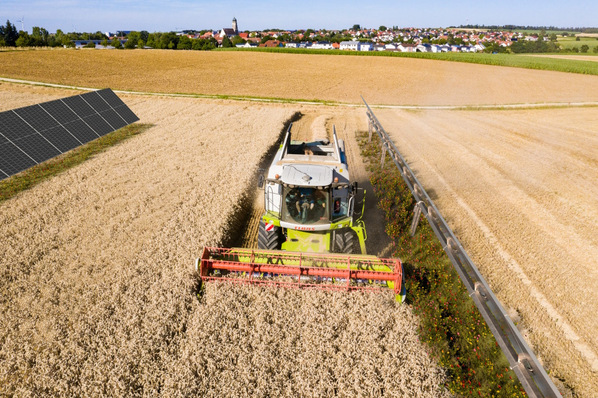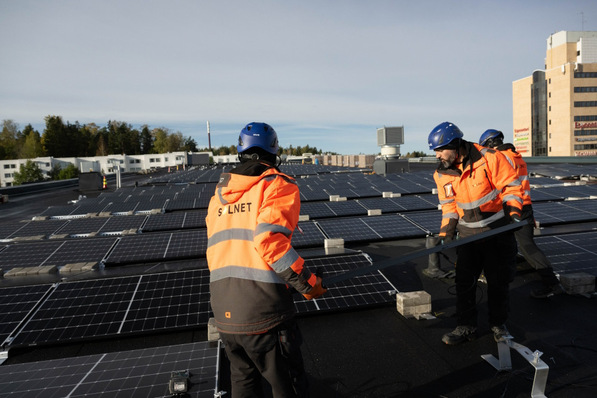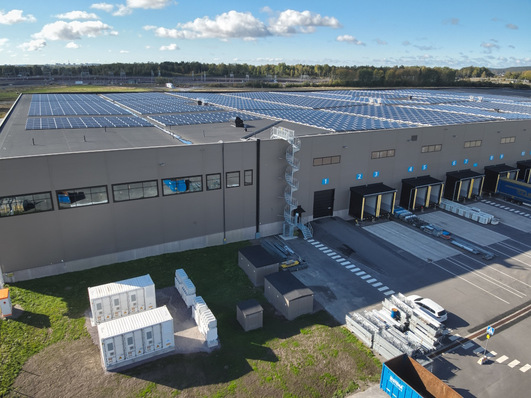After the hesitant entry into the business of stationary storage systems, the traditional battery manufacturer VARTA Storage from Nordlingen has now established itself in the market and is one of the most important suppliers. “In May 2017 in Munich, we presented our new compact storage system Pulse, with which we are very successful,” Andreas Fritz confirms. “Our most important market is and remains Germany, followed by Austria and Switzerland. We have good reports from Italy. We want to take Britain and Australia in 2018.”
The VARTA Pulse is a single-phase storage system that is not only in high demand in Germany. Italy, the UK and Australia are also typical markets for single-phase systems. Sales in Australia started in March this year. In Switzerland, on the other hand, single-phase systems do not do well. Three-phase systems are almost exclusively sold there.
Installed in half an hour
The VARTA Pulse is very easy to install, within 30 minutes. The installing companies have now familiarised themselves with the device, and the initial mistakes are now history. VARTA sells its stationary domestic storage units exclusively through wholesalers and has filled the gap left, for example, by Tesla.
The Pulse has been specially designed for the loads in a family home, providing up to six kilowatt hours of storage capacity. This is enough for a household of two to four people. The VARTA Element offers between three and 12 kilowatt hours. It is easily adaptable and can be extended as needed. Both, the Pulse and the Element, are designed as entry-level models. “Prices tend more towards the premium segment,” Gordon Clements, General Manager of VARTA Storage, explains. “We are not not about the cheapest possible storage systems or the fastest possible turnover. For us, this market is more of a marathon than a sprint.”
Endurance is required
The company also has more than 130 years of experience in the development and manufacture of battery systems. So far, it is the first established battery brand worldwide to also become active in stationary storage.
The company knows that long-term success requires endurance. And most of all: high quality. “We so far have a rejection rate of zero,” Alexander Hirnet, Technical Manager at VARTA Storage in Nordlingen, confirms. “In addition, our storage units are very easy to scale. Even if several Pulses are connected together they behave like one unit.”
The Pulse is very compact. The power electronics have also been consolidated in such a way that the entire system fits into a small, convenient housing. In addition, the electronics are very efficient: The company indicates the standby consumption of the storage unit at less than two watts.
Later retrofitting possible
Very important for customers is the guarantee that the storage units will always be compatible with future generations of lithium batteries. “If we decide to install different battery modules in one or five years, you will still be able to use the storage devices,” Alexander Hirnet says. “Retrofitting and subsequent additions are very important for our customers. The trend is towards larger storage capacities.”
Ambitious goals for 2018
The components are based on each other and are modularly connected in the system. In this way, VARTA does not commit itself to one cell supplier, but keeps its options open for the future.
Electric mobility is already emerging as a market driver. “The charging technology for the EVs of private customers requires better integration of the storage system with the house grid,” Hirnet continues. “That is why we will enter into partnerships with providers of wall boxes. We are storage manufacturers. Our core competencies lie in batteries and power electronics. When it comes to the smart integration of other components, we are on the look-out for allies.” VARTA Storage has already integrated My-PV heating elements into its system to provide hot water from solar power.
Commercial storage is gathering speed
While the systems for private end customers must be as simple as possible, the main focus in commercial storage is on the adaptation of the storage units and their integration into the specific requirements of the customer. This is much more project-based business. VARTA is now involved here as well. “Last year, several VARTA commercial storage systems were put into operation for a wide variety of applications,” Reiko Stutz, responsible for this business segment, says. “Economics play an even greater role in the commercial sector than in private storage. But we see promising opportunities for larger storage units in agriculture, industry or in apartment buildings, as well as for neighbourhood electricity using photovoltaics.”
The commercial storage systems installed to date had capacities of between 75 and 300 kilowatt hours. To this end, VARTA Storage offers a modular system where the battery units can be combined as pre-assembled cabinets. “We are now in a great position to get into the growing market in commercial storage,” Reiko Stutz confirms. “Our VARTA Flex storage system can be cascaded up to one megawatt hour.”
This commercial storage system is available in two versions: Flex Storage P provides between 26 and 260 kilowatt hours and can be extended up to 780 kilowatt hours. It has an output of between 20 and 120 kilowatts (360 if extended).
Flex Storage E is primarily designed for capacity, with the same power output. It has between 75 and 750 kilowatt hours of storage capacity. Important, too: For their commercial storage systems, VARTA is fully stocked and ready to deliver.
Controller is always in the loop
With commercial storage units, every cent counts. When companies invest in their own electricity supply, the investment should pay for itself as quickly as possible. “A controller is always in the loop,” Stutz says. “But there certainly are strong economic arguments. This is because commercial storage systems are not only about the self-consumption of solar power, but also about emergency power or the peak-shaving of loads that would otherwise have to be obtained from the power grid at high costs.” Companies are also pushing more strongly toward electric mobility, increasingly wanting to convert their fleets to full EVs. In such a case, the storage system must also provide sufficient power reserves if several cars are being charged at the same time. (HS)
What was new at the Intersolar and the EES Europe 2018 in Munich? Watch our expert’s movie clips here:
http://www.pveurope.eu/Videos/pv-Guided-Tours-videos-2018
Stay informed, get our newsletter twice a week.
Register here: http://www.pveurope.eu/Newsletter
Read more about solar modules.
Read more about solar mounting systems.
Read more about solar energy storage.







